| Umělec magazine 2000/4 >> In Ceca we trust | List of all editions. | ||||||||||||
|
|||||||||||||
In Ceca we trustUmělec magazine 2000/401.04.2000 Vladan Šír | news | en cs |
|||||||||||||
|
"Ten years after the disintegration of former Yugoslavia it seems that the once brotherly republics only have one last thing in common: a drink called Cockta. During our trip to the Balkans, we first came across Cockta in Belgrade, and then we noticed with surprise this local version of a cola appearing in menus in Sarajevo, Makarska Riviera and Ljubljana.
The citizens of the newly independent republics however have not known the freedom of travel for almost ten years. Due to mutual insults and bloodshed, the countries that once formed a unified state have all declared visa requirements on each other. Distances amounting to a mere few-hour drive have thus become almost insurmountable. Belgrade First impressions after crossing the Serbian border were gloomy. The initial kilometers into Serbian territory seemed like a drive through a lunar landscape. The freeway consisted of one monotonous asphalt strip lacking all lane divisions and traffic signs, the surrounding shrubbery was scorched and there were no cars going in any direction. The countryside around the freeway looked lonely. It was clear that this country has not invested in infrastructure for a long time. Perhaps the army grabs all the money. The capital city itself popped up like an oasis in the middle of an abandoned land: The streets were filled with people, cars and buses. You could find McDonald’s, United Colors of Benetton, Bata stores and other chain stores; Smart cars by Swatch cruised through the streets. Initially it looked like a very nice, lively city: the Berlin of the Balkans. “Where’s the embargo?” you wonder. But when you find out that Milošević’s son has an exclusive contract to supply the UN military in Macedonia with mineral water, you stop asking such questions. While visiting artists Zoran Naskovski and Vesna Pavlović we heard her name for the first time. Ceca, or Svetlana Raznatović: the famous star of the Yugoslav music industry, widow of the equally (in)famous internationally wanted butcher Arkan, or Željko Raznatović, and president of the Obilić Belgrade football club. Ceca’s singing style is turbofolk, a term which we had to have explained to us several times. It wasn’t until we had visited the School for History and Theory of Images at the Center for Contemporary Art that it had finally been made clear. The school’s professor, who was holding a freshly imported book on the phenomenon of camp, told us turbofolk was a mixture of disco and Serbian folk music with Arabic influences. How does Ceca rank in this style, we wondered. “But Ceca is the embodiment of turbofolk!” Marina Martić exclaimed. For an outside observer, Ceca was also the embodiment of the modern Serbian self-confidence and nationalism you feel in Yugoslavia. It was Ceca who said at a concert organized during the NATO bombing: “Don’t worry Russian brothers, Serbia will protect you.” (Zoran Naskovski documented this quote in his Internet project entitled War Frames at www. cyberrex.org/z.) The amount of self-confidence in the country is admirable considering the fact that Serbia did not gain any new territory in the past wars, and NATO forces now occupy part of its own land. For even a visitor from the Czech Republic, where an air of defeatism and collaboration traditionally prevail, it is overpowering. But soon you sense the darker side to this self-confidence: a universal reluctance to deal with the bloody past. It is inherent in both official government rhetoric and the opposition. There is not a politician at the moment who would voluntarily go against the dominant attitude in the country and admit that Serbia made errors in the previous years that lead to the fervid killing. A visit to another Belgrade artist, Raša Todosijević, confirmed our new suspicions. “Even the honest people won’t admit that something terrible happened, and it will take generations to solve this problem,” he told us. Todosijević is one of the most important Serbian artists and in the past he worked with such international celebrities as Joseph Beuys and Jean-Paul Sartre. He has not exhibited in the domestic scene for twenty years, which is his way of expressing opposition to the regime. Speaking with artist Uroš Djurić (he will have a solo exhibition at Prague’s Béhémot Gallery at the end of September), we again came across Ceca and Arkan, perhaps the biggest icons in Serbia today. We could not resist and asked Uroš to show us to Arkan’s grave. It was located in a new addition to a large cemetery. A gold strip lined the black marble tomb, which was bedecked by Arkan’s bust and a symbol of the Serbian volunteer force. Because a well-built young man was guarding the grave we hesitated for a moment but in the end we went to have a closer look. A book for condolences was placed on the grave for the visitors to sign. Meanwhile we spent a lot of time at the Center of Contemporary Art looking through its extensive archive of contemporary Yugoslav artists, including videos and catalogues. The Belgrade Center is very active in organizing exhibitions, lectures, and supporting artists who would otherwise not see a single dinar from government officials. At the same time, the Center represents the independent art scene abroad, maintaining contact with other institutions despite all the political and economic obstacles. Vladimir Tupanjac and Branko Dimitrijević of the Center and all others we met could talk at length about the situation in the local art scene, the problems the artists and art organizations deal with, conflicts with government officials and the false ideas of people from the west. (See interview with Raša Todosijević.) Sarajevo Traveling from Belgrade to Sarajevo you experience a feeling similar to weightlessness. You drive through the country and you have no idea what state you’re in, who it belongs to and who controls it. Serbia borders Bosnia and Herzegovina and, at the same time, one the Republika Srpska, which likes think of itself as independent of B&H. Several kilometers further on you find yourself in the Croatian-Moslem federation that likes to think of itself as part of B&H. The Serbian - Srpska border is a world of its own. The road from one state to the other leads to a railroad bridge, and you’re constantly worried that your journey might come to an abrupt end in this neutral land. The makeshift border crossing consists of constructed cubicles standing along a narrow village road. Men in uniform check your passport, and you have no way of knowing what state they are working for. Is it the Republika Srpska or Bosnia and Herzegovina? And like our arrival to Serbia, we had to buy a green card, a piece of white paper, for a lot of money and whose only purpose was to nest with the other trash littering our car. It could easily happen to you, as it did to us, that your passports will be taken away and you will be left at the mercy of cubicaled officers who will toss you around like a hot potato. At first sight, Srpska’s upcountry is amazingly luxurious. Huge new homes dot the countryside and driving through the first bigger town you feel you’ve arrived in Switzerland. Only the Cyrillic signs remind you that you’re daydreaming. Then suddenly everything changes as you drive through military roadblocks made up of tires and barbed wire and you pass the first shattered villages. The number of destroyed and burnt homes increases and you conclude that you’re getting closer to Sarajevo. The capital of Bosnia and Herzegovina is a sad sight. Although four years have passed since the end of the war and the locals prattle on about how the city is fixed up, traces of combat can be seen everywhere. You can often spot bombed out apartments in the buildings pock-marked with bullet holes. Elsewhere the patched up facades are eloquent witnesses of the destruction. Nobody bothers to fix up office buildings, and the burnt up high rises with broken windows silently jag up into the sky. It’s almost useless to search for artists in Sarajevo. Most of them left the country during and after the war. Sarajevo’s Center for Contemporary Art organized annual exhibitions after the conflict and printed accompanying catalogues. Flipping through them, you find out that one artist is currently living in Amsterdam, another in Austria, Sweden and the United States. Only a few still live in Sarajevo. Still, the Center maintains thorough documentation of works that were made by Sarajevo artists. Naturally we wanted to know how artists responded to the war and what this experience meant to them. Video documentation and catalogues showed that most of them made very personal accounts, often lacking any trace of the war or references to the situation after the conflict. Returning Confused Spending a few days in Sarajevo, you get used to seeing the ubiquitous bullet holes and destroyed houses just as the locals have done. The horror you see all around you won’t answer the question of why the Serbs, Bosnian Moslems and Croa-tians butchered each other anyway. In the end you learn that even Bosnians know and listen to Ceca, and all constructions you tried to manipulate in order to recognize the fate of the former Yugoslavia irretrievably vanish. Vladan Šír "
01.04.2000
Recommended articles
|
|||||||||||||
|
04.02.2020 10:17
Letošní 50. ročník Art Basel přilákal celkem 93 000 návštěvníků a sběratelů z 80 zemí světa. 290 prémiových galerií představilo umělecká díla od počátku 20. století až po současnost. Hlavní sektor přehlídky, tradičně v prvním patře výstavního prostoru, představil 232 předních galerií z celého světa nabízející umění nejvyšší kvality. Veletrh ukázal vzestupný trend prodeje prostřednictvím galerií jak soukromým sbírkám, tak i institucím. Kromě hlavního veletrhu stály za návštěvu i ty přidružené: Volta, Liste a Photo Basel, k tomu doprovodné programy a výstavy v místních institucích, které kvalitou daleko přesahují hranice města tj. Kunsthalle Basel, Kunstmuseum, Tinguely muzeum nebo Fondation Beyeler.
|



















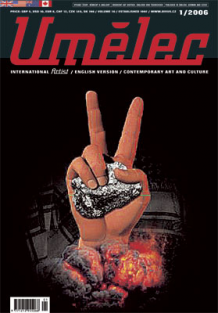




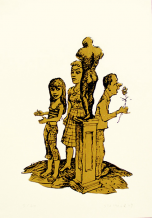
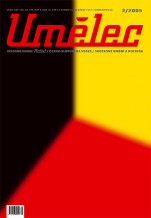
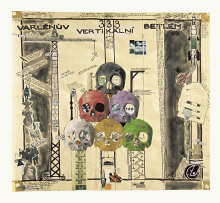
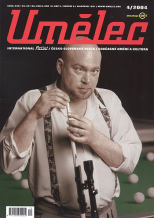


 New book by I.M.Jirous in English at our online bookshop.
New book by I.M.Jirous in English at our online bookshop.
Comments
There are currently no comments.Add new comment